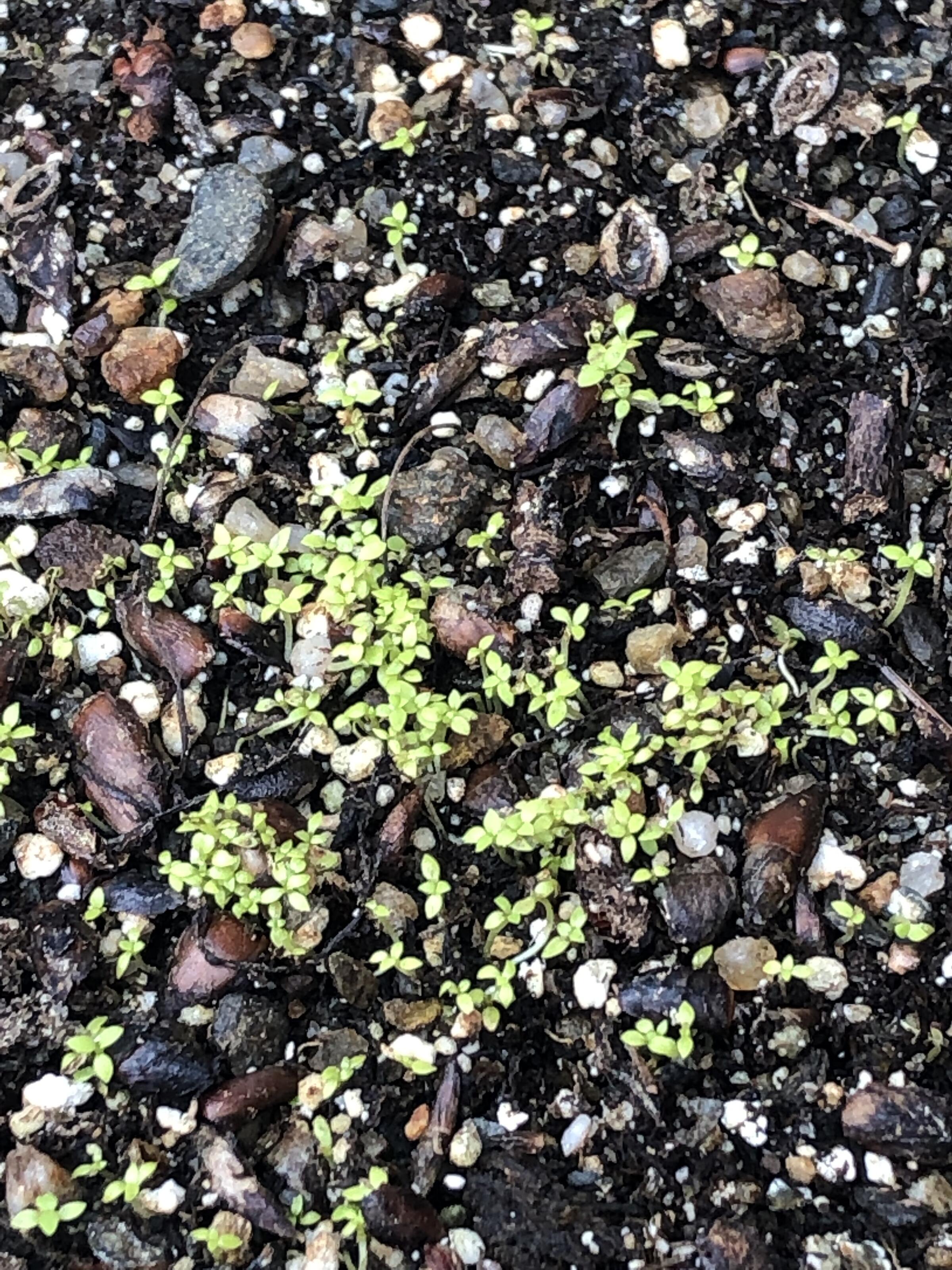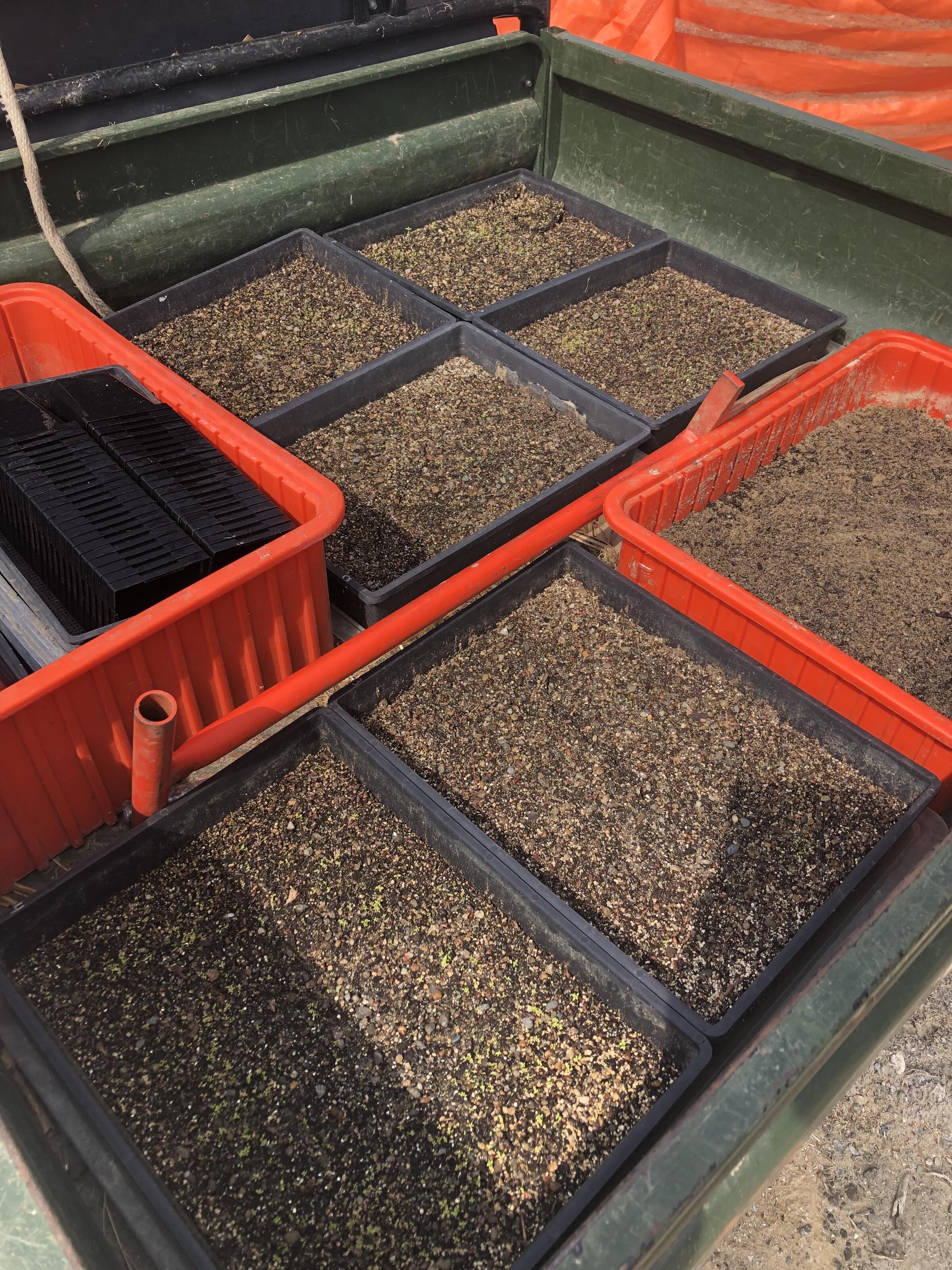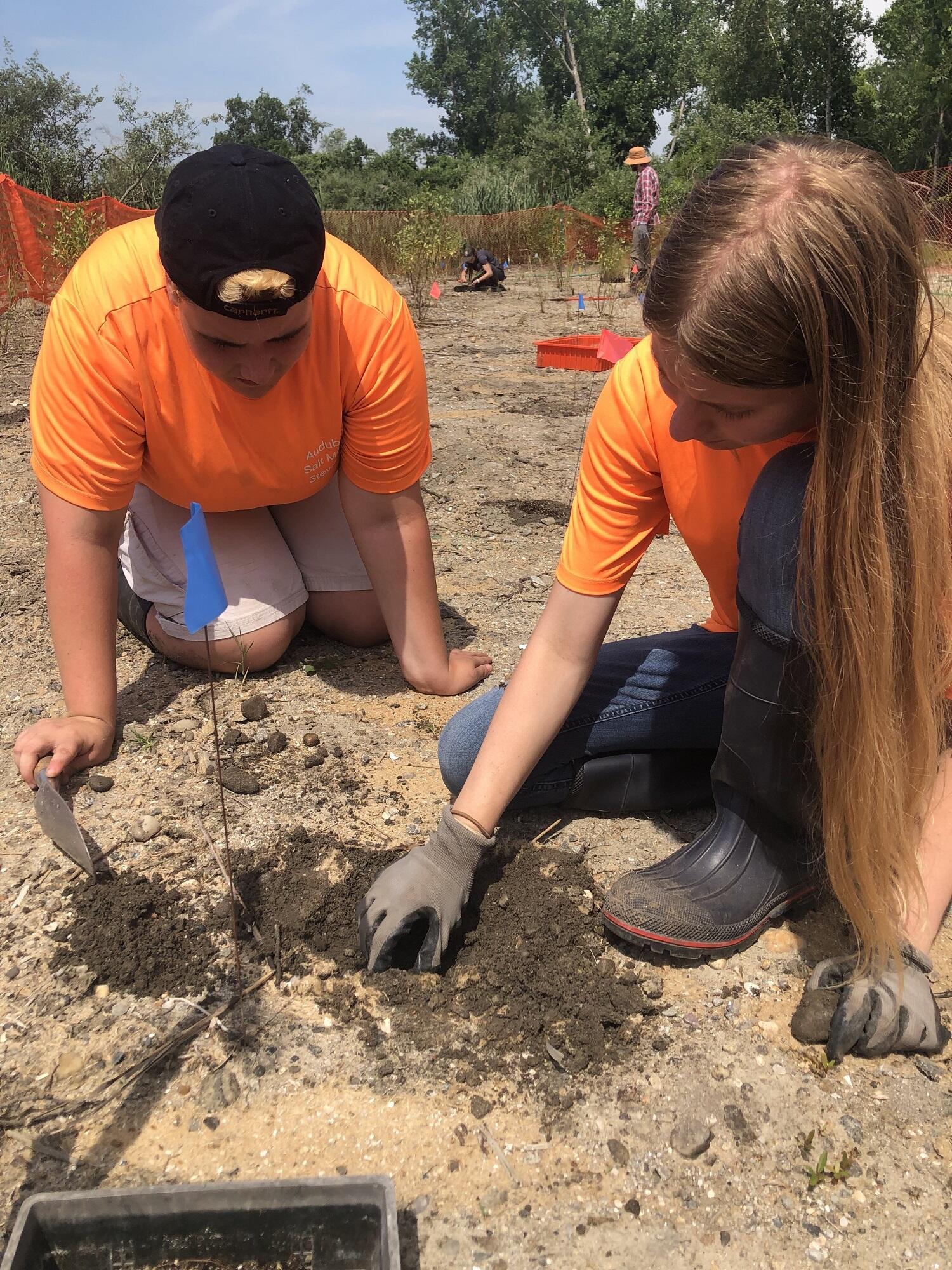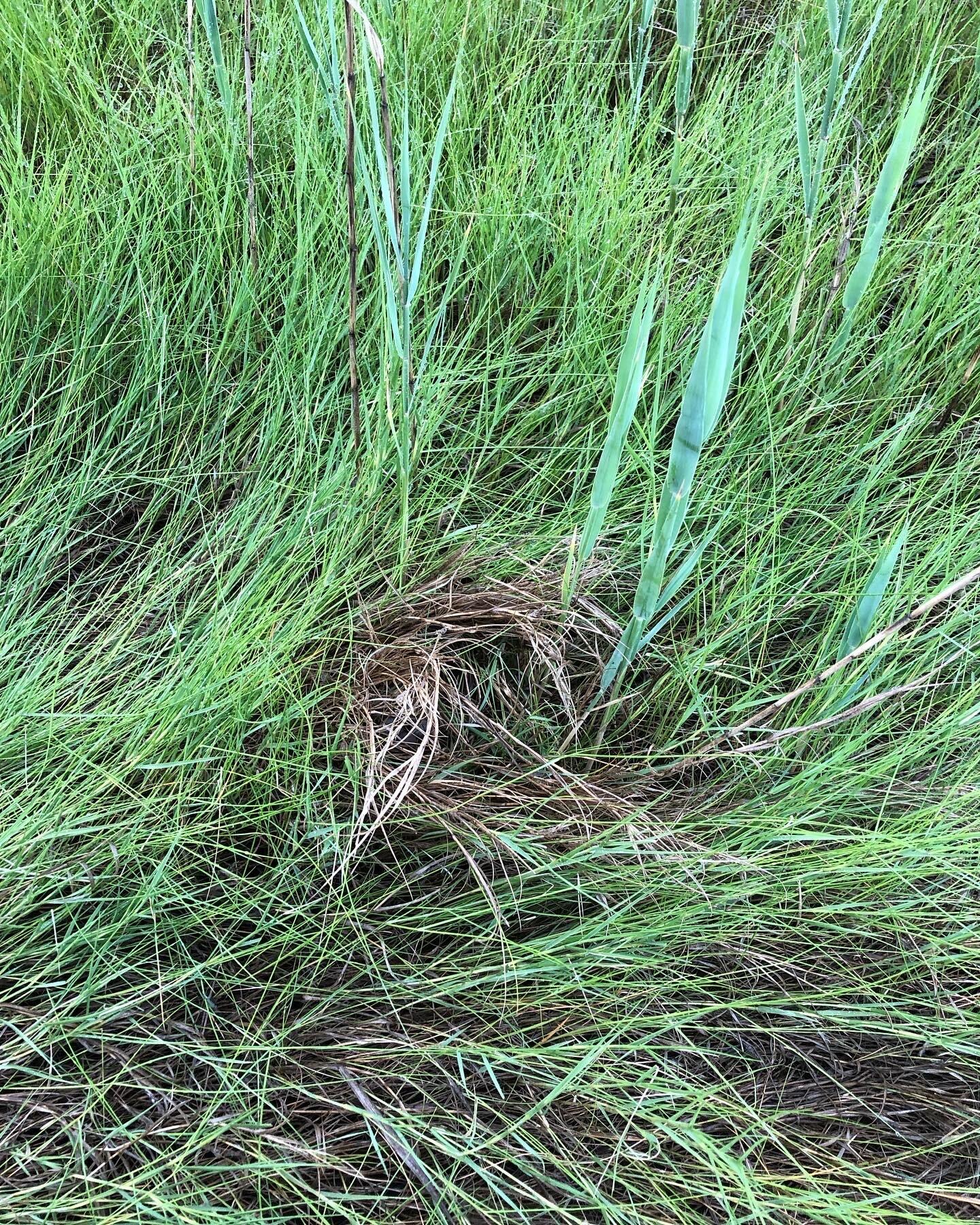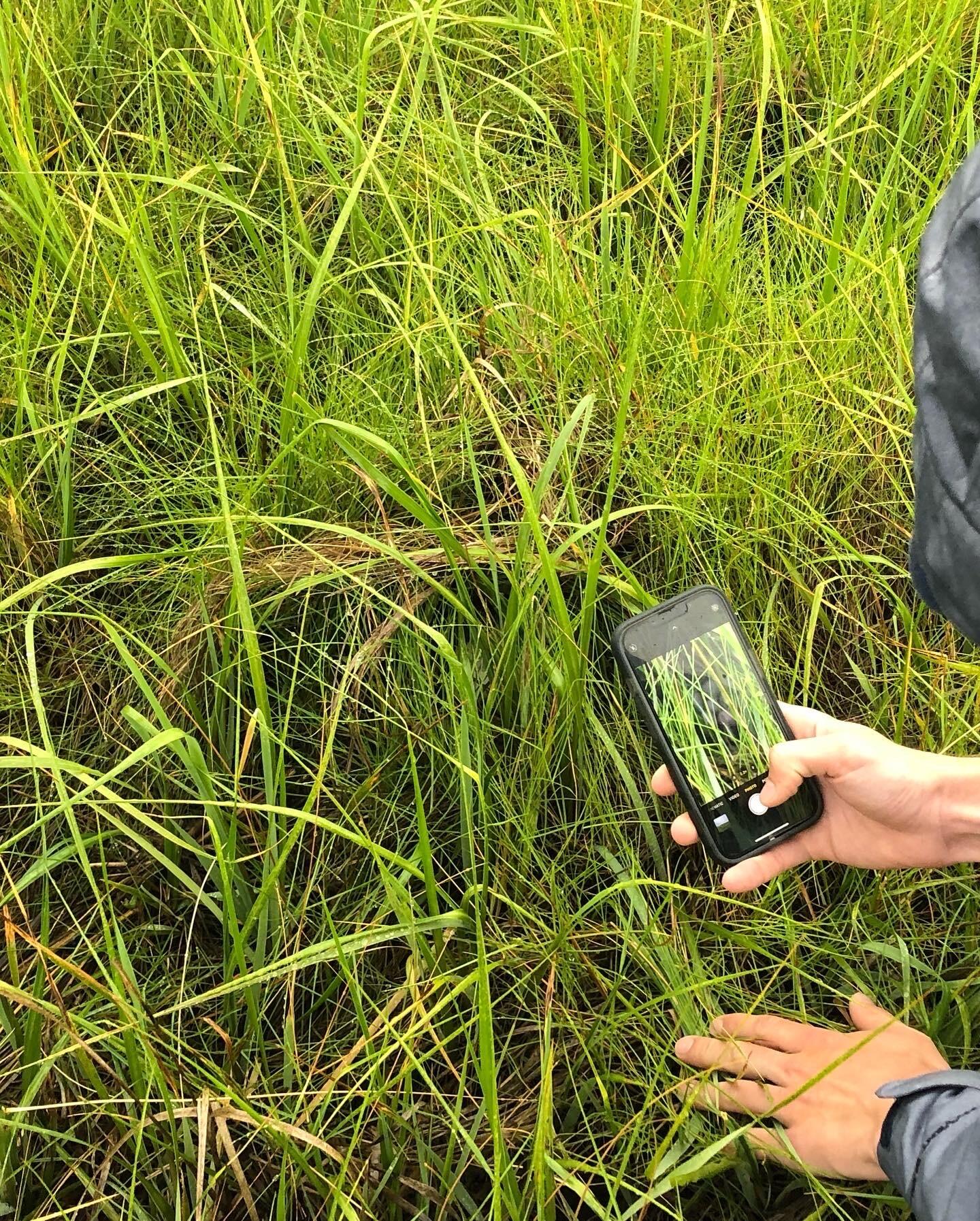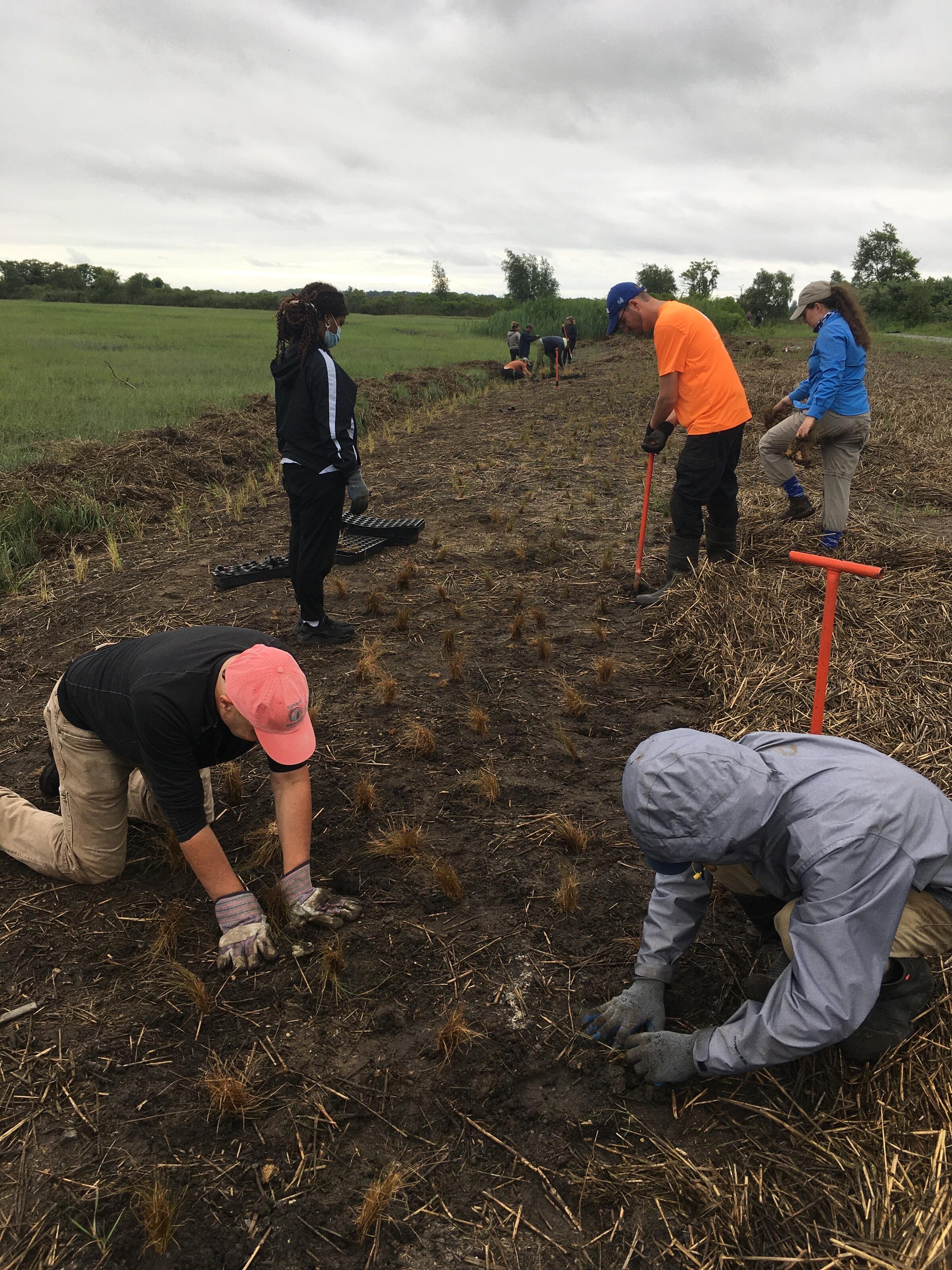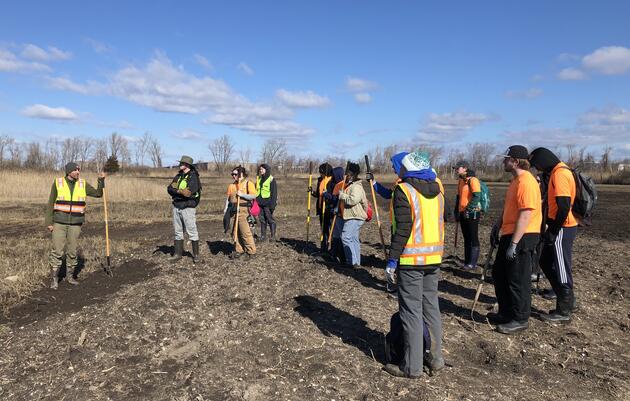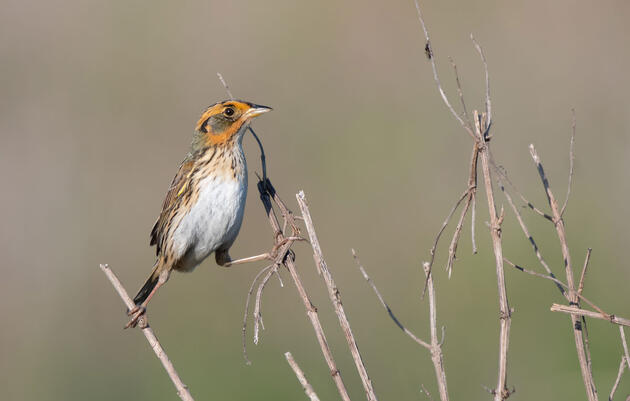Thanks to the work of our Salt Marsh Stewards, many volunteers, and staff, we have planted over 138,000 shrubs and plants at the Great Meadows marsh restoration site. This includes 3,200 seedlings of the endangered Marsh pink flower (pictured below).
75,000 of the plants are Spartina patens, some of which we planted on hummocks—small mounds of earth—to create higher elevation areas for the birds to nest in.
Only around 14,000 more plugs to go!
Next, we will move into the adaptive management phase. In this phase, both graduate and undergraduate students from UConn will survey the newly-planted hummocks to find nests, and complete vegetation transects (measuring and counting vegetation) to monitor success. We’ll also manage and control invasive species across the restoration area.
Just the other morning, the UConn team found two Saltmarsh Sparrow nests in the untouched habitat between of the hummocks! There were four eggs in one nest, which was nearly impossible to detect.
We made a point of NOT building up the hummocks where Saltmarsh Sparrows had nested in prior years, so they could return to their existing nesting grounds.
As our new hummocks areas grow, we hope to find Saltmarsh Sparrows nesting on the edges and tops of the grasses. If effective, this strategy could be expanded to other marshes across Connecticut and beyond.
Many thanks to our twelve Salt Marsh Stewards from Stratford and Bunnell High Schools who, along with their three crew leaders, just wrapped up their season with Audubon. This exciting opportunity gave the local students a paid experience in conservation and a chance to get involved in the project. We can’t thank them enough for their efforts.


